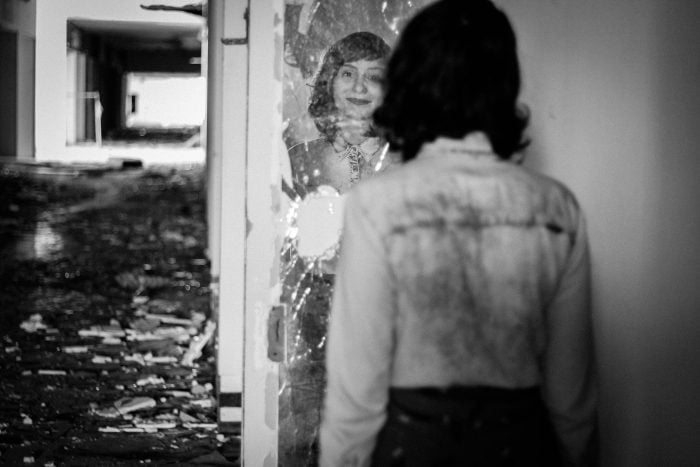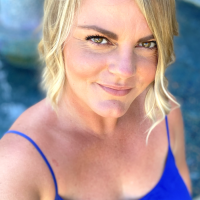I’ve been married 16 times.
I’ve married men I’ve slept with, and men that I have not.
I’ve married men I’ve been on a few dates with, maybe even just one.
I’ve married men I’ve never met before—celebrities, online crushes, and people I “met” online.
A couple of years ago, I “married” this online guy I developed a crush on. I referred to him as my Instagram husband when talking to friends, family, and coworkers. He never knew we were married, but this year I moved across the country and made his state, his city, my state and my city.
Sound crazy? Mortifyingly embarrassing? Shameful?
Maybe a little. But, it’s actually human nature.
In Shambhala: The Sacred Path of the Warrior, Chogyam Trungpa explains the concept of the cosmic mirror. Essentially, whatever we see and experience within the world is a reflection of ourselves:
“When we see a bright color, we are witnessing our own inherent goodness. When we hear a beautiful sound, we are hearing our own basic goodness. When we step out of the shower, we feel fresh and clean, and when we walk out of a stuffy room, we appreciate the whiff of fresh air. … [I]t is worthwhile to recognize and take advantage of those moments because they are revealing basic nonaggression and freshness in our lives—basic goodness.”
Perhaps this pattern is familiar: we see something that we like in a person and allow our minds to fantasize—to try them on. We ask ourselves, what would life be like with them?
For as long as I can remember, I’ve fallen head over heels in love with people who had something that I perceived myself to lack.
As soon as I read Trungpa’s words, my mind flashed to my Instagram husband and recognized that the person I had married was, in fact, myself.
Every adventurous video reflected my own desire for exploration and illuminated a corner within me that I had failed to allow myself to experience. The images of nature, people, and cities that he chose to share with the world strongly reflected my own views. All of the love that my Instagram husband had for the world reflected the love that I had within myself and that I yearned to safely express to others.
His authenticity revealed how much of my own I had been hiding.
It wasn’t just him.
As I looked back, each fantastical marriage had distinct patterns in the positive attributes that had tethered me to these people. Oppositely, there were negative reflections—things I didn’t appreciate.
When we look deeply into our connections with those whom we are most drawn to—romantic or otherwise—we can create a clear route to a truer self and more successful and fulfilling relationships.
Five steps we can use to find ourselves in the reflection of others:
1. Revisit past relationships.
Once we realize that our relationships are mirrors of our internal state, we are able to more clearly observe the image reflected in them.
When we set all of our mirrors out before us as if a giant wall, we start to see the larger picture.
Get ready for a stare down.
2. Query admiration.
What is it about this person that we admire so?
If a relationship has ended, it is helpful to look at what specific loss we are grieving most. When we are healing and beginning to step back into our daily lives without them, what is it that we most miss doing alongside that person?
In looking into my 16 “marriages,” I was able to identify multiple themes in what I admired in others: musical tastes—specifically the depth of the lyrics; an introduction to foreign concepts or places. I missed laughter and silliness, lust, and people to experience nature and adventure with.
Boiled down, what was reflected in others was my acceptance and appreciation of differences, an affinity for depth, playfulness, and overt sexuality, a thirst for exploration, and the desire to physically connect with the world through physical activity.
The strongest admiration—what I was drawn to the most: bravery in authenticity, and the pursuit of passion.
3. Query disappointment.
It’s not only positive reflections that are valuable to observe.
The things that serve as red and yellow flags—the least fun memories, nightmares, or insecurities that we experience surrounding our relationships—are powerful symbols that can reveal where we are failing to be authentic in our own lives.
I noticed in my failed “marriages,” a tendency to overwork or remain stagnant in life by embracing society’s status quo; a habit of pursuing careers based solely on ability with a disregard of whether it fueled a passion; and a repetitive clinging to things or people because they were familiar and comfortable.
4. Compare and contrast.
When I looked, I found that I was guilty of embodying what I disliked seeing in others. In fact, those tendencies were often directly oppositional to the things that I most desired in life and admired so much in others that I’d bind myself to them in a fantastical marriage.
I wasn’t nourished by the inauthenticity that I was clinging to—my outward display. Instead of doing the hard work to harvest the fruits of what was already rooted inside of myself, I allowed myself to lazily lust after the fruits that others had on display.
When we set our admirations and disappointments side-by-side and allow them to ricochet in our minds, it becomes easier to see where exactly we are failing to reflect to both ourselves and the outside world who we are and what we desire.
5. Make an action plan.
Once I realized that what I saw in my Instagram husband and the others before him was merely a strong indicator of where I authentically wanted to be and what I wanted to do, I began to make a step-by-step plan of how to get there.
I changed careers, moved somewhere that had long felt more like home than where I was living at the time, and began to actively pursue the passions that I’d long ignored or failed to allow myself to discover. Even if they were hard.
I also completed an amicable, imaginary divorce with my Instagram husband. We’re actual buds now. And wouldn’t you know: I met someone who I recognize as both a mirror, and an individual of his own. A real relationship in which we are able to look into one another and pursue growth in ourselves and with each other.
What I’ve learned from my 16 failed “marriages” is that instead of asking ourselves what life would be like with someone we admire, the better question to ask ourselves is, what would life be like if I fully embodied who I am in my core—if I were the someone I admired?
The moment we realize that each human connection is a reflection of ourselves is the moment that we can finally open to finding and experiencing true love with ourselves and another.
 Share on bsky
Share on bsky






Read 19 comments and reply